Designed by Frank Pennink and later refined by Robert Trent Jones Sr., Pinhal is a classic parkland course known for its pine-lined fairways and strategic design. The layout blends challenging elevation changes with scenic views, offering a round that appeals to golfers who appreciate both beauty and precision. Pinhal is ideal for those looking to enjoy a relaxed pace of play while still embracing the challenge of a mature, well-maintained course.
Course Layout
& Hole-by-Hole Guide
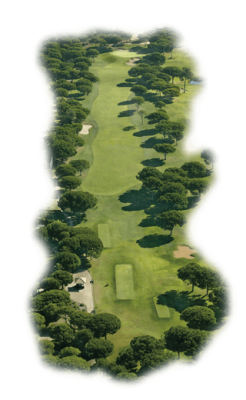
Hole 1 – Par 5
The opening hole is a long par 5 (498m) with a rising fairway that hides the green until the crest. A left-side drive is ideal for a better second shot on the gentle downhill slope. The raised, split-level green is well protected by a tree, bunkers, and a mound.
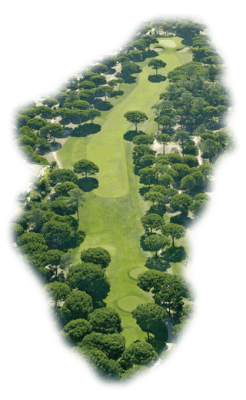
Hole 2 – Par 4
In this drive, place your drive through an opening between pine trees. Be mindful of the pine tree on the fairway, 60 meters from the green, with a narrow entrance between the bunkers.
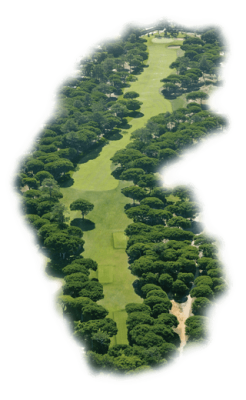
Hole 3 – Par 5
PAR 5 protected by pine trees along the fairway. There is a slight dogleg from right to left on the second shot to a fairway. Pay attention to the two-tiered green protected by two bunkers on the right.
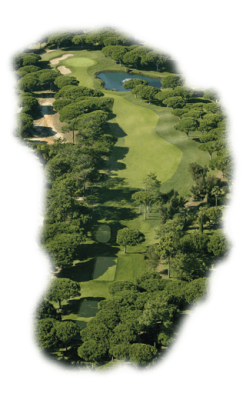
Hole 4 – Par 4
In this picturesque PAR 4, water comes into play on the approach of the tee-shot on the descending fairway. Play the green on the left-hand side of the lake to avoid being blocked by the pine trees. Two bunkers on the left protect the surface and the placement of the putt.
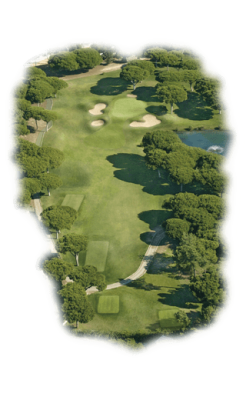
Hole 5 – Par 3
A small green, protected by the lake on the right and three bunkers.
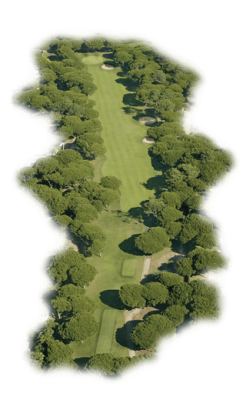
Hole 6 – Par 4
Green in two shots along a narrow fairway. The tee-shot should be a draw, away from the sand on the right. Limited green entrance between bunkers.
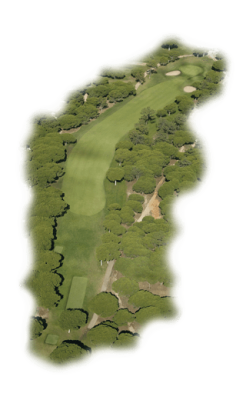
Hole 7 – Par 4
PAR 4 of 395 meters, sloping to the right. Generous fairway, but avoid the trees on the right. Use a long iron for the uphill second shot. Bunker on the right, 39 meters from the green, and another on the left.
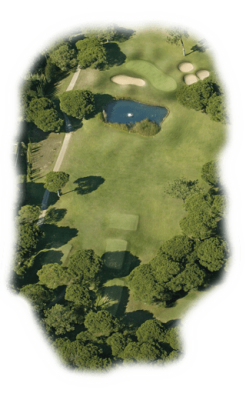
Hole 8 – Par 3
PAR 3 of 147 meters, played over a lake to a green that slopes from left to right. Three grass bunkers on the slopes and a front sand bunker.
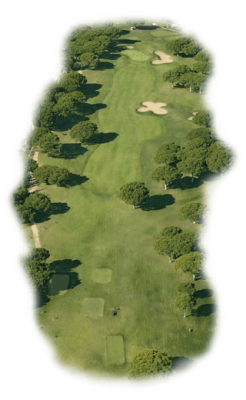
Hole 9 – Par 4
Open PAR 4 where only the bunkers can prevent a par or better. Preferred approach below the flag, as downhill putts can be tricky.
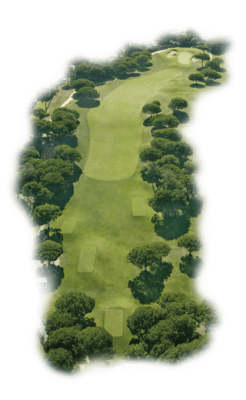
Hole 10 – Par 4
Blind shot from the tee. The approach to this narrow green, sloping to the left, is crucial, as precision is essential for using the putt in an unlikely birdie.
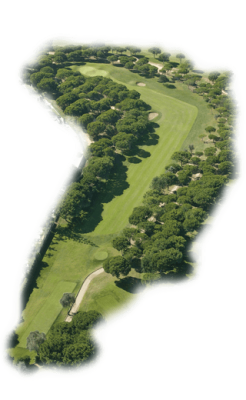
Hole 11 – Par 4
Short PAR 4 with a dogleg to the left. A wood on the fairway or a long iron to the right is the best bet from the tee. The green features a small valley that can affect ball placement.
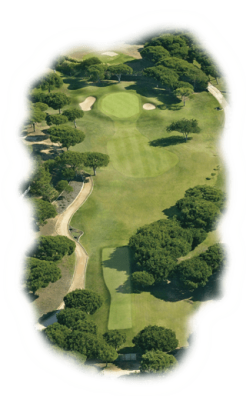
Hole 12 – Par 3
Simple PAR 3 with a flat green, protected by bunkers on both sides.
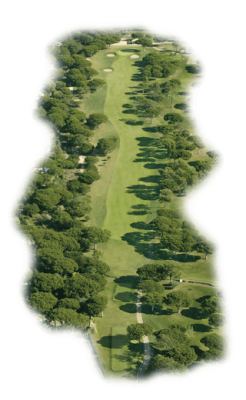
Hole 13 – Par 5
PAR 5 of 522 meters where the fairway rises, so both the drive and the second shot are played blind. A generous green, protected by bunkers on both sides.
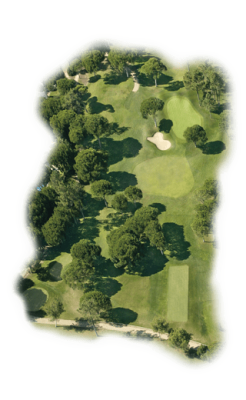
Hole 14 – Par 3
Short PAR 3 with a bunker before the green. There is a pine tree to the left of this hazard, making the shot more difficult.
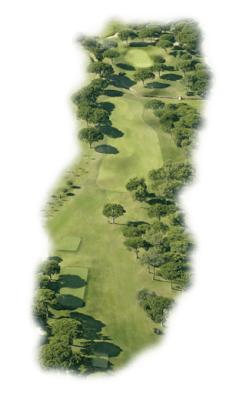
Hole 15 – Par 4
Played downhill and with an unnecessary drive due to a stream that crosses the fairway at an angle very near an elevated green. With no bunkers, it only requires a precise shot.
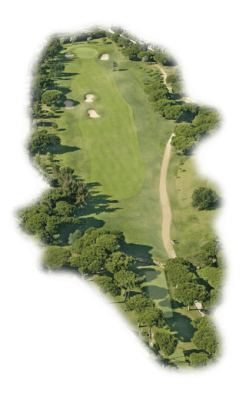
Hole 16 – Par 4
Three bunkers on the fairway grouped to the left. Green entrance with bunkers on both sides.
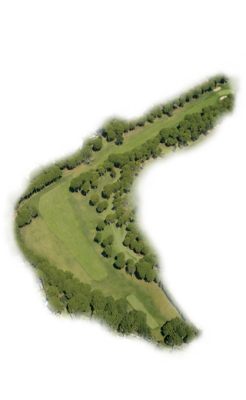
Hole 17 – Par 5
Challenging PAR 5 of 496 meters with a 90° dogleg to the right. The curve is defended by trees. The best bet is a fairway wood (3/5). The second shot is played over the curve, approaching the green protected by two bunkers.
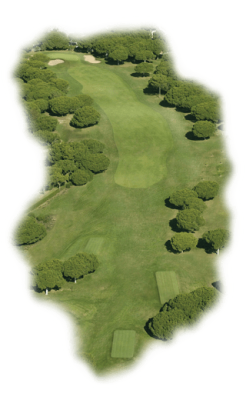
Hole 18 – Par 4
The fairway slopes upward, so the green is not visible from the tee. The downhill approach is treacherous, with three deep bunkers protecting a green full of contours.
Practice Facilities
at Pinhal
Pinhal is home to the Vilamoura Golf Academy, featuring an expansive driving range, short game area, and putting green. Practice here before your round or take advantage of our expert-led lessons to refine every aspect of your game.
Pinhal
The Pinhal Clubhouse offers a unique experience with views over the driving range, providing the perfect setting to relax and enjoy a meal. The menu is diverse, ranging from fresh salads to the classic club sandwich, along with daily specials that feature Portuguese dishes.
